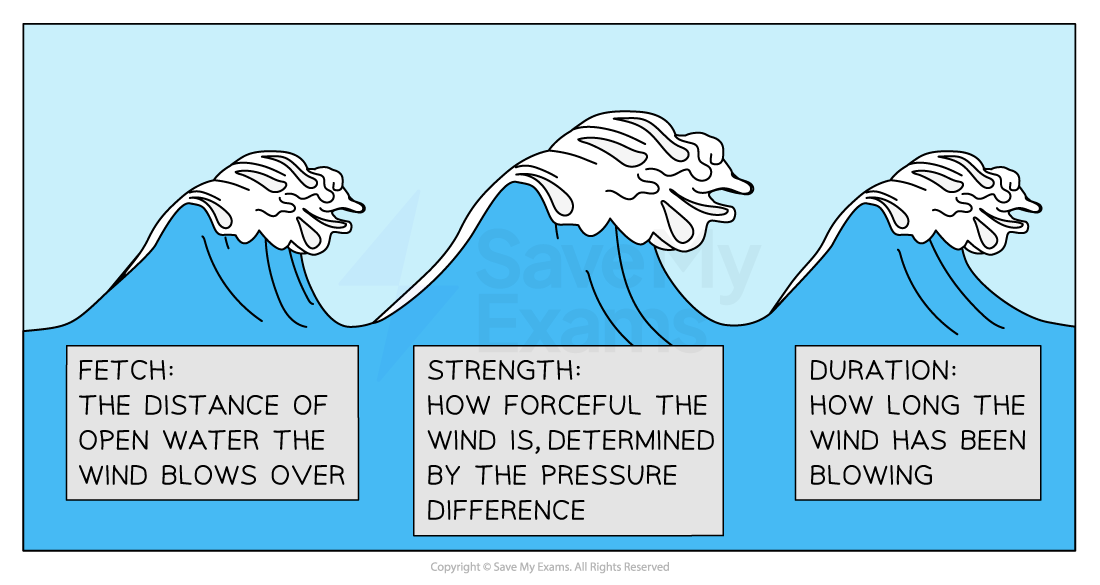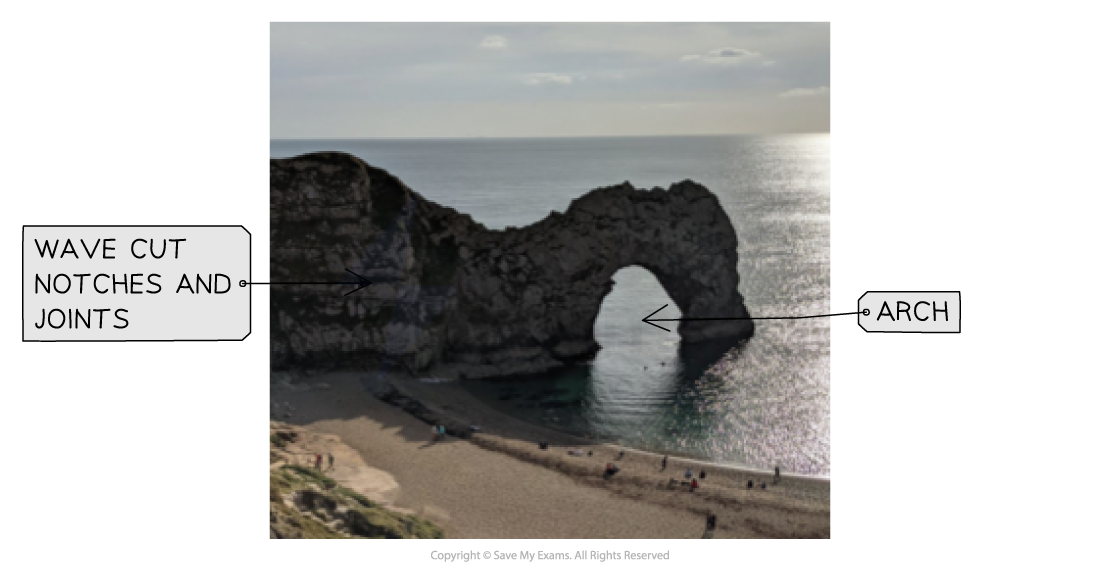Wave Types
- The main source of energy at the coast is the waves
-
- Waves are mainly generated by wind
- The friction between wind and the water surface which transfers energy from the wind to the water
- Wind occurs because of the rotation of the earth and differences in atmospheric pressure when different parcels of air are heated differently by the sun
- Various features of the wind will affect how much energy a wave has: fetch, duration and strength of the wind.

Wave characteristics
- Wave height is the distance from the peak to the trough
- Wave length is the distance from crest to crest
- Wave frequency is the number of waves which pass a specific point over a given time
Types of wave
- There are two main types of wave, constructive and destructive

Constructive and destructive waves
Impact on beach morphology
- Beaches are formed from loose material
- Waves alter the morphology (form/shape) of the beach
- The morphology is also affected by the size and shape of the beach material
- The type of wave in an area can vary depending on the time of year or coastal management
- Beach profiles are steeper in summer when there are fewer destructive waves and gentler in winter
- Storm berms may develop in winter when large destructive waves carry larger sediment further up the beach than normal
- In winter beaches may also have a greater variation in pebble size as larger pebbles are deposited by the destructive waves and smaller pebbles are removed
- Offshore ridges/bars are formed due to material being eroded from the beach by destructive waves and deposited offshore
Types of Wave and Their Characteristics
| Wave Type | Formation | Wave Form | Break Characteristics | Beach |
|
Constructive |
Distant weather systems, calm local weather, short fetch |
Long wavelength (up to 100m), low, spilling waves, low energy, low wave frequency |
Strong swash, weak backwash |
Build up the beach with a gentle beach profile |
|
Destructive |
Local storms, strong winds, high fetch |
Short wavelength (Approx. 20m), high, plunging waves, high energy, large wave height |
Weak swash, strong backwash |
Beach is limited. Steeper beach profile is likely in the short term |
Exam Tip
Ensure that you are familiar with the way in which waves are formed and their different characteristics. It is also important that you are able to explain the differences in beach profile throughout the year.





